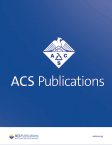基于机器学习的皮层下神经成像在帕金森病诊断中的性别差异
IF 3.4
Q2 PUBLIC, ENVIRONMENTAL & OCCUPATIONAL HEALTH
引用次数: 0
摘要
目的本研究利用三维 T1 磁共振成像(MRI)帕金森病进展标志物倡议(PPMI 数据库)的皮层下脑区数据,评估机器学习(ML)分类器诊断帕金森病(PD)的能力。我们的目标是找出表现最佳的算法,并评估与性别相关的准确性差异。设计/方法/途径我们将使用对大脑结构(如普鲁士门、丘脑、脑干、延脑、杏仁核、尾状核、海马和苍白球)的 MRI 扫描,比较多种 ML 算法对帕金森病和健康对照组进行分类的能力。研究结果该研究显示,ML 分类器在诊断帕金森病方面的表现在皮层下脑区各不相同,并显示出性别差异。Extra Trees分类器在男性中表现最佳(在普鲁士门的准确率为86.36%),而Naive Bayes分类器在女性中表现最佳(在杏仁核的准确率为69.23%)。男性在延脑、海马和尾状核等区域的准确率为中等(65-70%),而女性的准确率较低。研究结果表明,在复杂的大脑结构中,存在明显的性别差异,因此需要建立针对不同性别的模型来提高诊断的准确性。我们对这些区域的新颖关注发掘了它们的诊断潜力,提高了模型的准确性,并强调了医学人工智能中性别特定方法的必要性。这项工作最终将有助于更早地发现帕金森病并提供更个性化的治疗。本文章由计算机程序翻译,如有差异,请以英文原文为准。
Gender variability in machine learning based subcortical neuroimaging for Parkinson’s disease diagnosis
PurposeThis study evaluates machine learning (ML) classifiers for diagnosing Parkinson’s disease (PD) using subcortical brain region data from 3D T1 magnetic resonance imaging (MRI) Parkinson’s Progression Markers Initiative (PPMI database). We aim to identify top-performing algorithms and assess gender-related differences in accuracy.Design/methodology/approachMultiple ML algorithms will be compared for their ability to classify PD vs healthy controls using MRI scans of the brain structures like the putamen, thalamus, brainstem, accumbens, amygdala, caudate, hippocampus and pallidum. Analysis will include gender-specific performance comparisons.FindingsThe study reveals that ML classifier performance in diagnosing PD varies across subcortical brain regions and shows gender differences. The Extra Trees classifier performed best in men (86.36% accuracy in the putamen), while Naive Bayes performed best in women (69.23%, amygdala). Regions like the accumbens, hippocampus and caudate showed moderate accuracy (65–70%) in men and poor performance in women. The results point out a significant gender-based performance gap, highlighting the need for gender-specific models to improve diagnostic precision across complex brain structures.Originality/valueThis study highlights the significant impact of gender on machine learning diagnosis of PD using data from subcortical brain regions. Our novel focus on these regions uncovers their diagnostic potential, improves model accuracy and emphasizes the need for gender-specific approaches in medical AI. This work could ultimately lead to earlier PD detection and more personalized treatment.
求助全文
通过发布文献求助,成功后即可免费获取论文全文。
去求助
来源期刊

ACS Chemical Health & Safety
PUBLIC, ENVIRONMENTAL & OCCUPATIONAL HEALTH-
CiteScore
3.10
自引率
20.00%
发文量
63
期刊介绍:
The Journal of Chemical Health and Safety focuses on news, information, and ideas relating to issues and advances in chemical health and safety. The Journal of Chemical Health and Safety covers up-to-the minute, in-depth views of safety issues ranging from OSHA and EPA regulations to the safe handling of hazardous waste, from the latest innovations in effective chemical hygiene practices to the courts'' most recent rulings on safety-related lawsuits. The Journal of Chemical Health and Safety presents real-world information that health, safety and environmental professionals and others responsible for the safety of their workplaces can put to use right away, identifying potential and developing safety concerns before they do real harm.
 求助内容:
求助内容: 应助结果提醒方式:
应助结果提醒方式:


